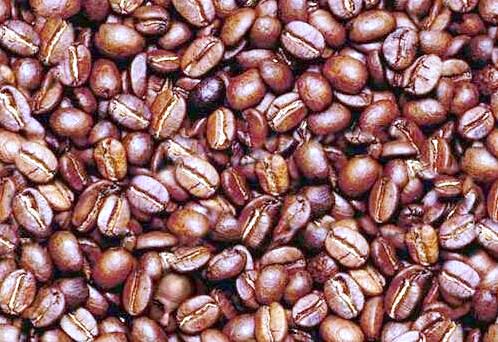
Philippine Postharvest Industry Profile: COFFEE
![]()
|
|
Philippine Postharvest Industry Profile: COFFEE
|
Four Major Local Varieties
Arabica - best cup quality for its excellent flavor and aroma; early bearer (2 years after transplanting); susceptible to coffee rust; exacting in soil and climatic requirements; yields about 1,000 kg per hectare of green coffee beans
Liberica ("Kapeng barako") - produces the biggest berry among the commercial groups; very strong taste and flavor; tolerant to drought; yields about 1,000 kg per hectare per year of green coffee beans
Excelsa - similar to Liberica except for its smoother, thinner and more rounded leaves with smooth edges; berries are borne in heavy cluster; usually bigger than Arabica but smaller than Liberica; yields about 1,000 kg per year of green coffee beans
Robusta - is characterized by a large umbrella shaped growth. The leaves are thinner than Excelsa and the berries are smaller than Arabica. If properly tended, one hectare could yield 1,200 kg per year of green coffee beans.
Production
largely concentrated in Mindanao (64% of the country's coffee is produced in this island). Luzon contributes 27% while certain provinces in the Visayas accounts for 9 % of the country’s total coffee production.
Davao and SOCCSKSARGEN contribute at least 50 % to the country’s total coffee production; has the highest area planted to coffee (40% contribution to total coffee area)
Provincial level: Sultan Kudarat has the largest area planted to coffee (13% contribution to the total area planted nationwide. Compostela Valley and Bukidnon follows with an area contribution of 18%. Cavite contributes about 6% of the total coffee area and CAR
Postproduction Operations
the most expensive and time consuming operation in coffee production
coffee is harvested during the dry season when the coffee cherries are bright red, glossy and firm
ripe cherries are either picked by hand, stripped from the tree with both unripe and overripe beans, or all the beans are collected using a harvesting machine
coffee berries do not mature uniformly; uneven maturity also requires additional labor through several harvestings
4 different methods of harvesting coffee (Taken from the “Coffee Harvest” by Michael Clark, et al., 1999):
1. Stripping method – This is done by hand removing all the cherries including the flowers. It produces poor results because of the mixing of the good cherries with the damaged ones but it is still practiced in some parts of Africa and Brazil.
2. Using a comb to brush the trees – This method uses a comb to remove only the ripe cherries from the tree. This is a time-consuming process but could be worth the time invested because the unripe cherries will eventually become ripe increasing the future yield.
3. Mechanical harvesting – This process uses a vibrator fixed to the trunk of the tree shaking the ripe cherries lose. Another mechanized harvesting tools are rotating brushes attached to the side of the tractor however, this process damages the tree by ripping off the green cherries, flowers and leaves at the same time.
4. Hand picking – This is the most expensive method because hand picking the cherries when they become ripe must be done as many times as required until all cherries are harvested.
COFFEE POSTHARVEST STATE OF THE ARTS (download MSWord doc)
Please check these pages often for updates. Brought to you by the
Planning and Evaluation Department
Bureau of Postharvest Research and Extension
CLSU Compound, Science City of Muñoz 3120 Nueva Ecija, Philippines
Your
suggestions, comments and ideas are welcome. Please write to the web
author: ![]()
Copyright © 2007 BPRE. All rights reserved.